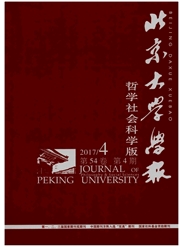

 中文摘要:
中文摘要:
汉语诗歌从远古到当代新诗,形式和美学特征都发生了很多变化。这些变化有一定的语言和心理基础。旧体诗句长的增长并稳定在7字,体现了人脑处理能力的限制,这反过来影响了旧体诗的社会接受度。押韵是旧体诗的核心形式要求,这与旧体诗的吟诵形态有关,新诗的阅读形态决定了押韵要求的消失,但新诗在押韵方式的潜能上胜过旧体诗。汉语的宽式语形引导汉诗以意境为最高美学追求,但随后带来了词汇的文化负载过重,使得诗歌的语言革新势在必行。新诗在美学追求上有新抒情诗、形式诗、智性诗三种,这与世界诗歌的发展大势相合。解释语言和心理特质对诗歌的影响,需要进一步对现有理论进行完善。
 英文摘要:
英文摘要:
The forms and aesthetic features of Chinese poetry have changed a lot from ancient times to now, based on some linguistic and psychological factors. The length of classical Chinese poetic line became longer and remains stable, i. e. 7 characters, which is affected by the processing ability of human brain. The stability of the poetic line length has made classical poems popular among the general public. Classical Chinese poems rhyme probably because they must be song or chanted. Modern poems that are generally read but not sung may not rhyme, but the rhymes of modem poems are more in types compared with clas- sical poems. The liberally shaped structure of Chinese makes imagery the highest aesthetic accomplishment of Chinese classical poems, but it also ren- ders more cultural load in words (i. e. Chinese characters), which calls for linguistic reform. There are three types of modem poems: new lyrics, formal poem and intelligent poem, and the aesthetic features of Chinese and other countries'modem poetry are similar to each other. It is necessary to improve the linguistic theory for the relations between language, brain and poetry.
 同期刊论文项目
同期刊论文项目
 同项目期刊论文
同项目期刊论文
 期刊信息
期刊信息
